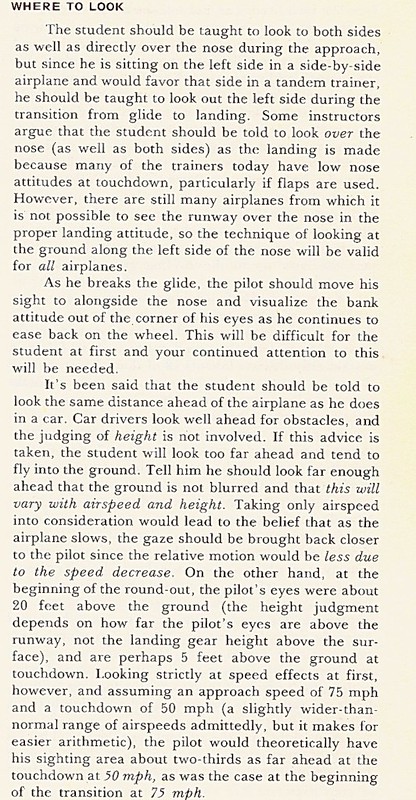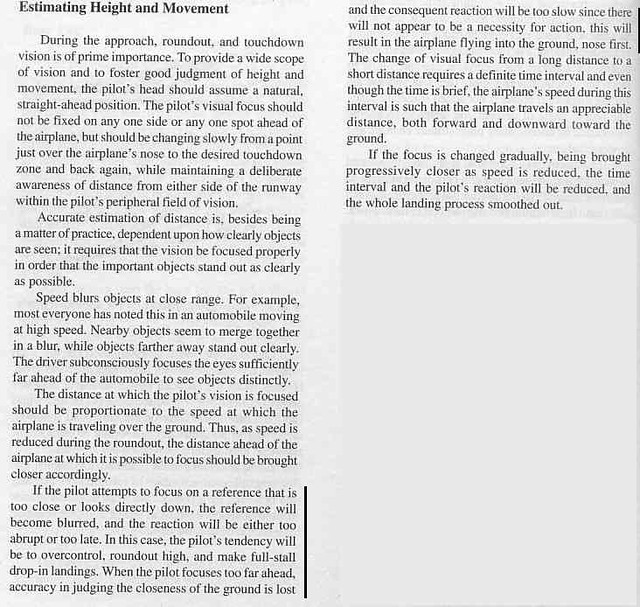"There are three secrets to getting perfect landings every time.
Unfortunately, nobody knows what they are!" :wink2:
Here is a recipe for landings, the key words are proper speed and trim.
Go up, do stall practice. During the power off 'approach to landing' stalls, note the exact speed the plane stalls at. Go into the POH IAS-CAS conversion table and find the appropriate CAS, multiply that by 1.3, go back into the table and find the corresponding indicated air speed for that calibrated airspeed. That will be the speed you want to get to when leveling wings out onto final.
Next is to to do some slow flight, and I mean slow.
Get the flaps all the way out and slow the plane down to the 1.3Vso speed you found before and trim the plane for that speed. Make a notation of what power you are using to stay level. Now pull the power to idle, don't change trim or apply back pressure or forward pressure, just let the plane settle in on its trim speed, note your rate of descent. Start adding power until you are at a 500' rate of descent, note that, It's your target trim and power settings that you want to be at finishing turning base to final. Keep adding power and noting how much rate of descent/climb changes for every 200 rpm, while you're at it, note the sound difference between those various rates. Now lets slow it down so the stall horn is blaring continuously, and note how many flicks of the trim wheel it takes to trim for that speed. Again, run a quick power drill as before, noting what power you are at for a 200fpm descent. This is your target power and trim to be at coming in low over the threshold ready to flare for touch down.
Now put it together in the pattern so you turn base to final trimming up to your 1.3Vso speed corrected for actual weight (the first exercise) and setting the power for the 500fpm rate of descent. Note the height of the threshold in the windshield. If you notice it creeping up the windshield, add power until it stabilizes position, don't change pitch, change power and let trim handle speed and pitch. If you see the threshold going down in the windshield, reduce power until it stabilizes.
At this point you should be on a stabilized descent that will take you to the runway at 1.3 Vso hands off. Once you get 'over the fence add in those flicks of the trim wheel in that you figured hen you got into the second phase of the slow flight drill when you took it down to where the stall horn came on and set the power for the 200fpm descent and fine tune it from there to get a nice rate of descent with the stall horn on. As you feel the descent slowing, you'll be coming into ground effect, and this is where you pull the power out and let the plane settle in.


